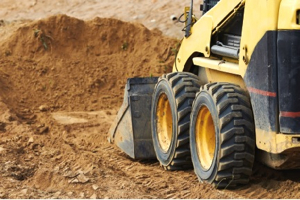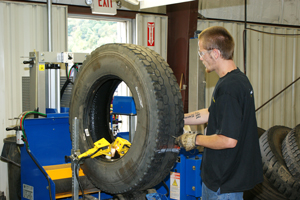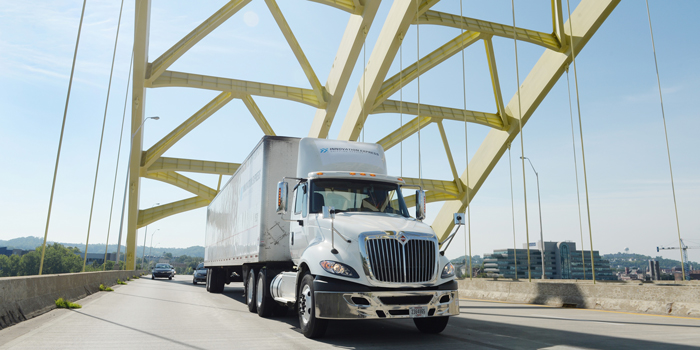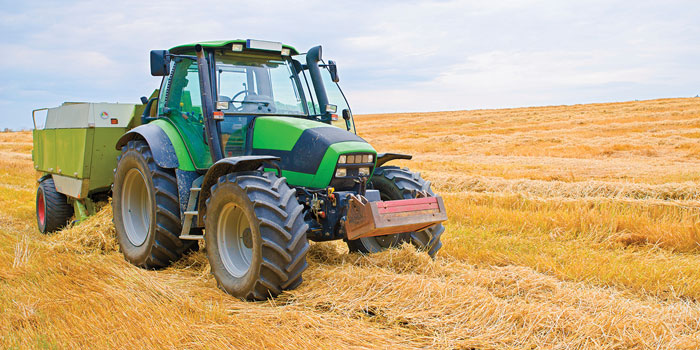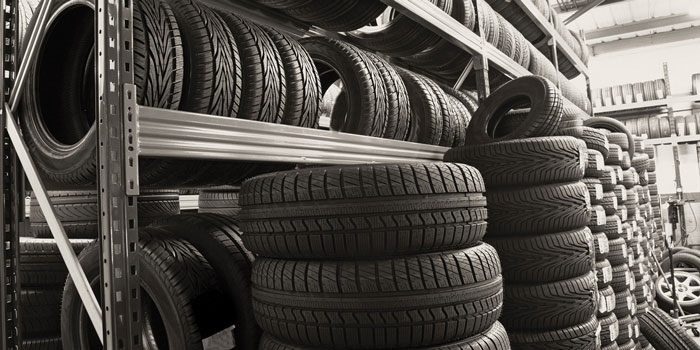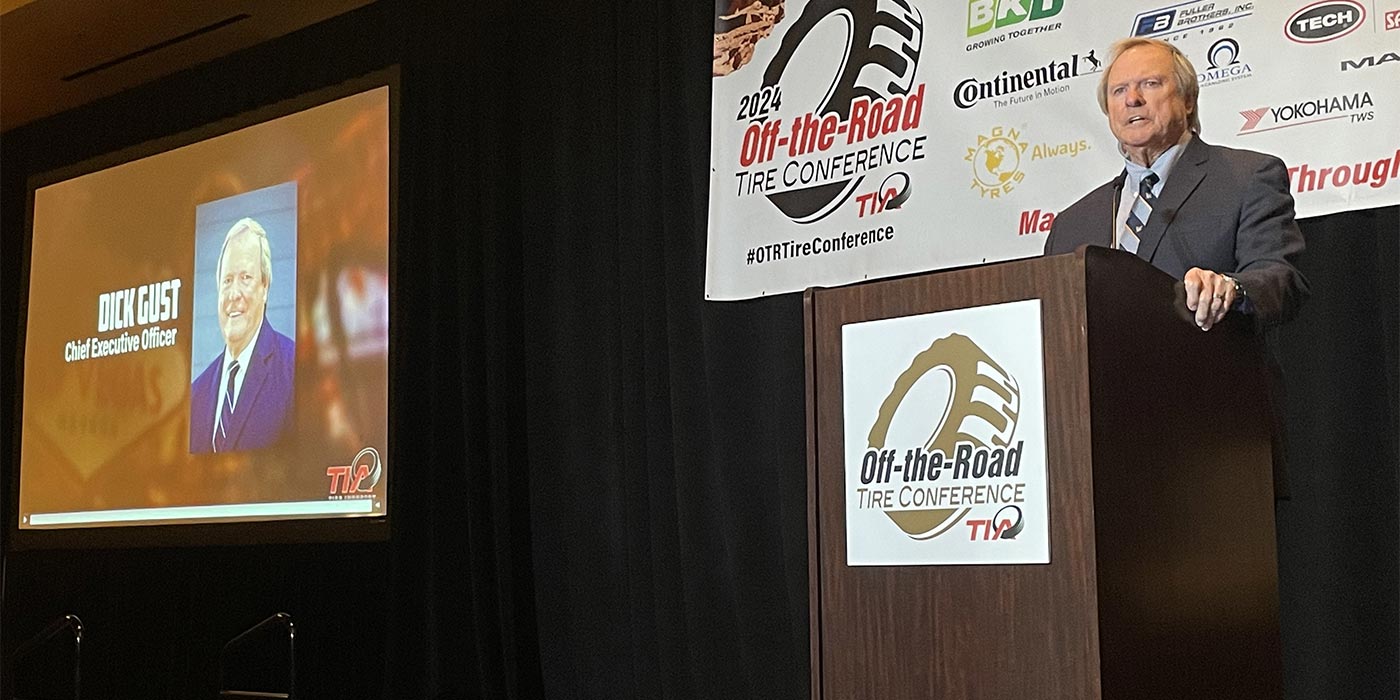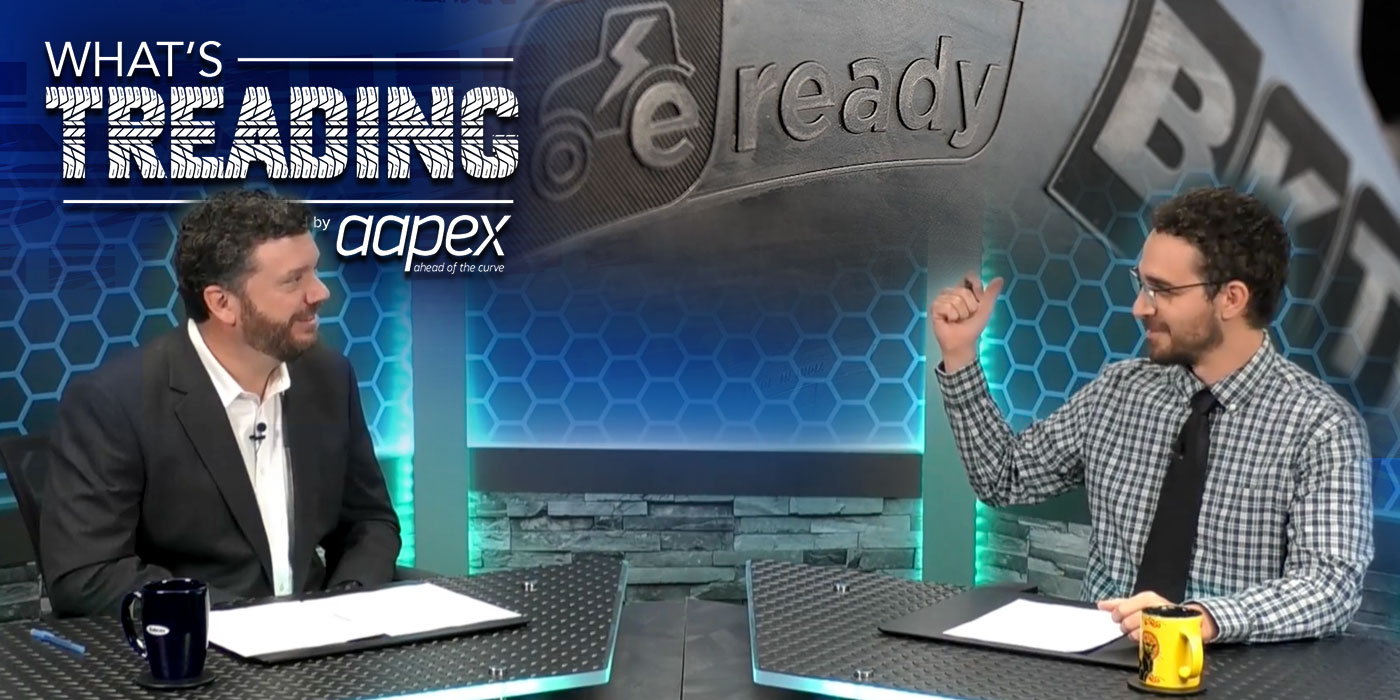The off-the-road (OTR) tire business is cyclical, highly specialized and greatly impacted by global economic factors. This may not be groundbreaking news, however the extent and speed of change for these cycles has taken on a new level over the past few years. This will present several new industry challenges over the short-term, with much of the industry’s focus centered on how and when the market will rebound.
Taking a long-term industry view, it’s exciting to think that we’re entering a transformative era within the OTR industry that will be driven by trends like big data, predictive analytics and automation – shifting from a transactional-focused model to a solutions-oriented approach to business. Much of this will be driven by two key segments: mining and construction.
Mining Stays Under
The global demand boom of the early 2000s continued for more than a decade, increasing production to record levels; however, productivity declined during this same time period.
There is an old saying in the mining industry, “Good mining conditions make for bad miners.” The productivity numbers during the past market run have proven this to be true.
According to the MineLens Productivity Index, there has been a 3.5% per year reduction in mine productivity. The OTR tire segment in North America will continue to be directly affected by this decline.
Commodities in general are trending downward due to normal supply-and-demand imbalance, but some commodities (coal, for instance) are experiencing a greater decrease in global consumption under increasing environmental and regulatory pressures. This trend is likely to continue in both the short- and long-term considering that, among other factors, the world’s two largest coal consumers – the U.S. and China – have continued efforts to curtail coal use for electric-power generation during the last few years.
In market conditions such as these, OTR tire manufacturers and their dealer networks need to work harder than ever to provide customers with an exceptional level of service, particularly now as more tire suppliers enter the marketplace. That starts first and foremost with having a solid understanding of the mining industry, including market conditions – both locally and globally – as well as the mine’s business operations.
Mining customers work in dangerous conditions and expect high-quality, durable tires they can trust to deliver optimal performance and withstand the demands and stresses of the job. Understanding how factors like heat, cut resistance, load capacity and tire wear impact a mine site’s day-to-day productivity and profitability are critical to providing them with the optimal solutions.
Taking a long-term industry view, it’s exciting to think that we’re entering a transformative era within the OTR industry that will be driven by trends like big data, predictive analytics and automation – shifting from a transactional-focused model to a solutions-oriented approach to business.
Furthermore, it’s important for manufacturers and dealers to utilize improved technology to deliver maximum value – lowering operating costs by finding opportunities for greater efficiencies. Technology can be used to reveal fleet-specific opportunities to lower costs, such as capturing data to track and understand drivers of tire cost per mile, ton or hour. This moves the conversation beyond strictly tire purchase price. Having this information on hand allows fleet managers to make tire total cost of ownership and service decisions that maximize uptime and increase profitability.
When looking toward the future of the industry, we must acknowledge that autonomous equipment will eventually reach mass adoption levels. The use of data will move from a reactive post-incident need to a dynamic environment where operational adjustments are made based on a variety of sensory inputs, including tire conditions, which optimize productivity during an operating cycle. The ability to capture and track tire temperature and pressure exists today, but integrating this into the overall production system to allow for immediate operational adjustments will be the future.
Those manufacturers that can combine product, service and technology to drive performance enhancements will be positioned to break the paradigm of price and tire life as the only meaningful criteria used to evaluate tire performance.
It’s important to note, however, that the mining outlook is showing some positives. The aggregates market is robust and healthy. In late 2015, the U.S. House of Representatives approved a bipartisan bill, titled the Surface Transportation Reauthorization and Reform Act of 2015 (STRR), to spend up to $325 billion on transportation over the next six years, $261 billion of which is designated for highways. The bill should keep quarries busy for sand, stone and gravel with the continued resurgence of infrastructure improvements in the U.S.
Similar to the STRR Act, the Fixing America’s Surface Transportation (FAST) Act also will provide a moderate increase for the aggregates market, providing stability to the highway construction private sector by way of spending on infrastructure. The FAST Act (passed in December 2015) funnels $305 billion into the federal transportation budget from fiscal year 2016 through 2020, allowing states to purchase aggregates to build, improve and maintain roads, highways and bridges.
The increased need for supply will likely help bolster this year’s OTR tire segment forecast particularly in the aggregates segment that will likely feel it first, as national supply and demand
for highway construction will provide momentum. Similarly, it
will continue the opportunity for new lower cost entrants to enter
the market.
Construction Builds Up
As road construction increases, so is building construction. Last year was a better year for the construction industry as we saw a 6.1% increase in total construction spend over 2014 levels. Despite some differing opinions on exactly how strong the industry will be in 2016, forecasts are largely positive with Q1 2016 showing an 8.6% improvement versus the same time period in 2015. The Dodge Data & Analytics 2016 Construction Outlook report predicted 6% industry growth for 2016 in total, with the forecast looking positive for demand and business.
The National Association of Homebuilders (NAHB) projections for single-family homes in 2016 shows great improvement nationwide, while multifamily housing – a long-time “shining star” for residential projects – is thriving especially well in the New York metro area due to major developments. Commercial building, while not growing, is predicted to remain fundamentally strong.
When it comes to new equipment sales, many OEMs are facing numbers reflecting the overall commodity trends. New equipment sales have seen a substantial decline in Q1 2016 compared to prior years. Many of these OEMs are following similar patterns as their customers and are expanding their efforts on the controllable aspects of their business, for example, cost, market share, quality and safety. They are not immune to the headwinds their customers are facing.
Meeting Market Needs
With the market staying balanced more than we have seen in the past two years, there are more new entrants into the OTR tire segment.
As new products, suppliers and technologies emerge, choices increase for both dealers and end users. Making the right choices is even more difficult today. For dealers, more brands, sizes and options can be overwhelming to manage from an inventory perspective. For customers, more choices mean the potential for more confusion.
Customers and dealers alike can benefit from receiving trusted products and services that are bundled by one manufacturer. Not only is it important for customers to feel good about the brand they choose, it’s also important to establish a relationship so dealers and manufacturers can work together to develop long-term solutions that benefit a customer’s business.
Ultimately, a successful manufacturer understands how and why it is important to offer good-better-best solutions to meet a variety of needs for end users.

